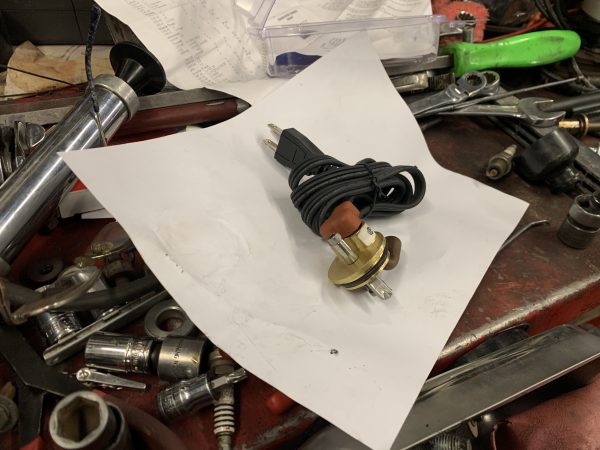
Anchorage auto mechanic Bret Moffet stood underneath a forest green pickup truck last week that was hoisted about seven feet in the air. He used a long wrench to unscrew a bolt hidden deep in a maze of parts.
“This requires quite a bit of patience,” he said, the bolt tight and difficult to remove.
Listen to this story:
Moffet was in the middle of installing yet another engine block heater at L and M Motors. The process had become almost routine: It was his third one in three days.
With temperatures sinking below zero degrees last week, demand for engine block heaters skyrocketed, said Moffet’s boss, Michael Feeney, who stood nearby in the busy garage.
“We average probably 30 or 40 a winter, but when it gets cold like this we might have 30 or 40 in a week,” he said.
Auto and environmental experts say that’s a good thing. More people plugging in their cars on cold days makes a difference for both the vehicles and for air quality, they said.
“It will extend the life of your car,” said Timothy Mason, owner of Sand Lake Automotive.
There are different kinds of block heaters. Last week, Moffet installed a frost plug heater. The metal piece that went under the truck’s hood was small. It fit in the palm of his hand.

One mechanic likened it to an electric mattress pad. Randal Smith, an automotive instructor at the University of Alaska Anchorage, said it’s kind of like a hair straightener.
“You plug it into the wall and it starts getting hot,” he said. “All it is is a heating element, and that’s essentially it.”
When plugged in, engine block heaters keep the engine block, coolant and oil warm.
That’s critical, Smith said. When oil gets cold it becomes thick and gooey, like corn syrup, and it doesn’t move like it should to lubricate the engine.
“You ultimately end up with a metal on metal which is not good,” Smith said. “That’s incredibly accelerated wear and potentially catastrophic damage if it continues for too long.”
Smith said an engine block heater not only eases wear and tear on the engine, it also helps the inside of a car warm up quicker.
Plus engine block heaters are good for air quality, said Andria Cross, environmental health educator at the Anchorage Health Department. Cars that start cold belch out more pollutants including carbon monoxide and particulate matter.
“When plugging in your vehicle for two hours into your block heater it actually can reduce emissions up to 60% and that’s specifically the carbon monoxide that’s emitted during the first 10 minutes of engine operation,” Cross said.
For years, the city health department has encouraged Anchorage drivers to plug in their cars at 20 degrees and colder.
Cross said that’s based on an analysis of the times the city exceeded federal recommendations for carbon monoxide emissions. Most often, it happened when temperatures hit 20 degrees or below.
On those cold days, Cross said, cars don’t have to be plugged in for too long. She recommends people use a timer so their heaters turn on two hours before they’re ready to leave in the morning.
Smith said he could think of just one potential con of an engine block heater: The cost.
Jerry Guest, service advisor at Specialized Import Auto Service, said the costs for the parts and installation can vary widely depending on the type of car and heater.
“I put it between $400 and $500, generally speaking,” he said.
There’s also the electric bill. Cross estimates it costs Anchorage residents about 20 cents to plug in small or medium-sized cars for two hours a day, and 50 to 60 cents for larger vehicles.
“The cost is really offset when you look at the fuel efficiency and all those other factors when plugging in your vehicle,” she said.
Cross said the city gives out free timers, and there’s a text messaging service that sends alerts when temperatures dip to at least 20 degrees.
In Anchorage in 2019, that happened during 62 days, said Brian Brettschneider, a climatologist with the University of Alaska at Fairbanks’ International Arctic Research Center.
That number has continued to shrink over the decades.
From the 1950s to mid-1970s, Anchorage had a low temperature of 20 degrees or colder an average of 125 days a year, Brettschneider said. That decreased to about 110 days a year from the 1980s through 2010. In the last decade, it’s averaged 90 days, he said.
Brettschneider said he expected the trend to continue, making the season for engine block heaters shorter and shorter, comparing it to how the Anchorage Assembly recently cut the city’s studded tire season by two weeks.
In future years, he said, an engine block heater “would certainly be less necessary, but that’s not to say it would be unnecessary.”




